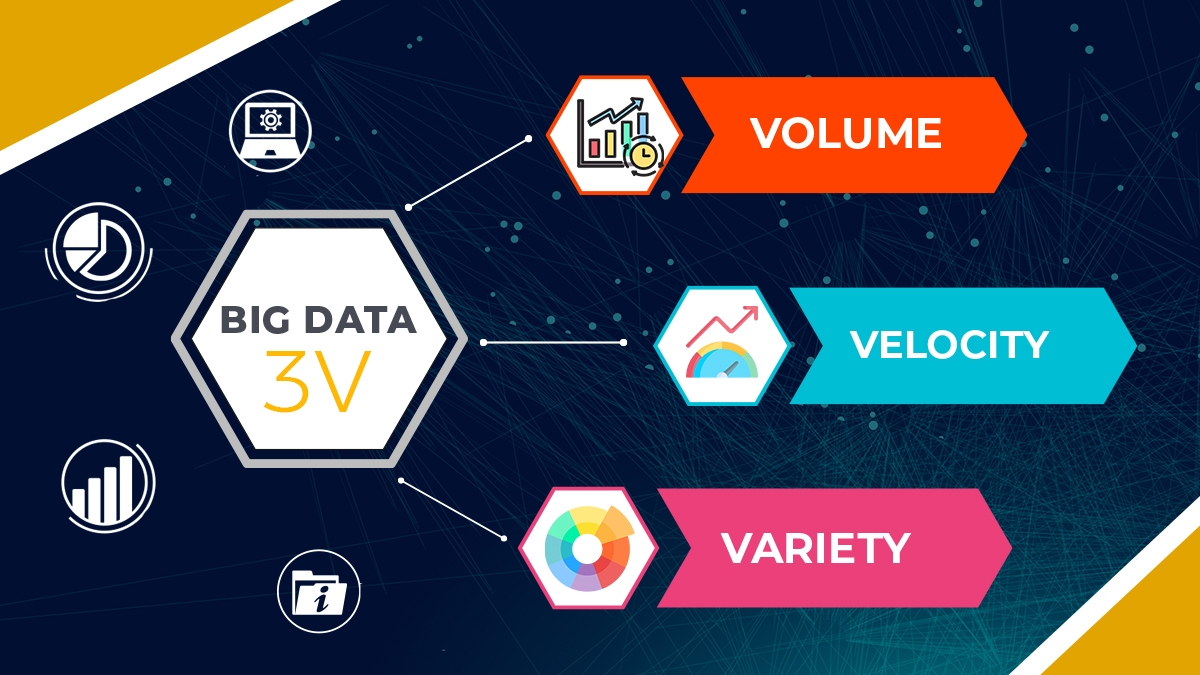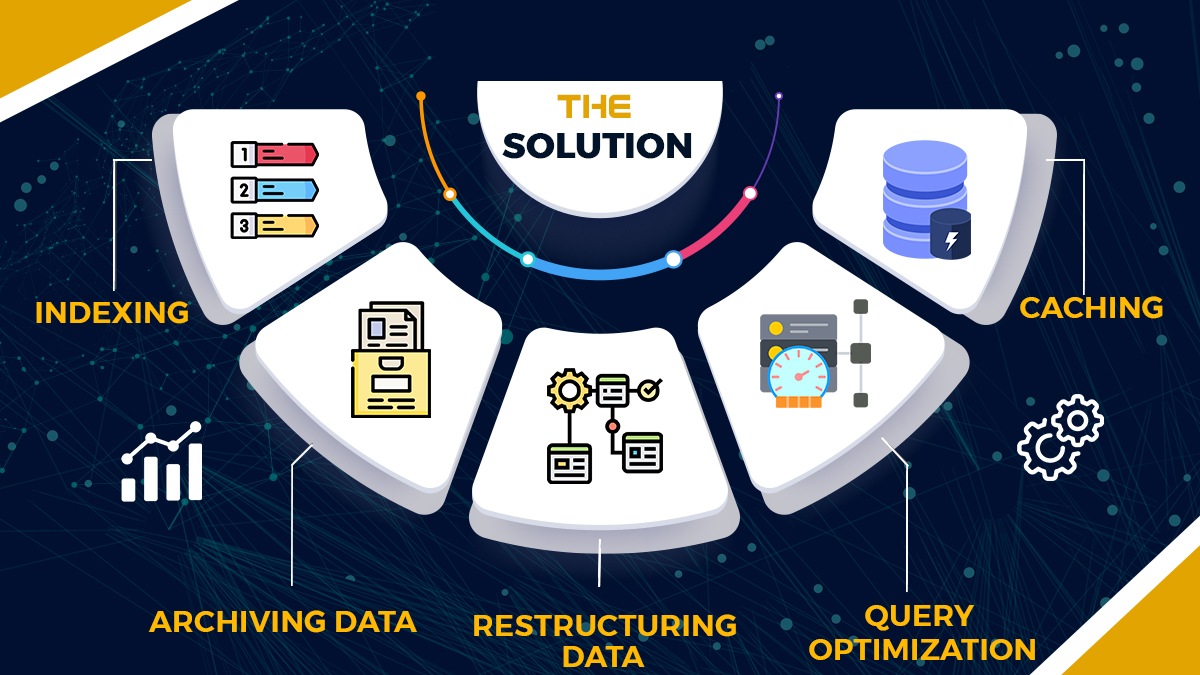In today’s digital world, businesses and organizations are empowered by a rich abundance of data. In layman terms big data means the volume, velocity and variety of data that many companies must process and analyze to make informed decisions. Whereas, just by understanding how to handle big data can change a company’s operations, customer experience and overall performance.
Big data is not a buzzword, basically it is a fundamental shift in how businesses operate and compete in the modern world. After the proliferation of digital devices and the internet continues to grow, we have seen the data generated globally is increasing at an unprecedented rate. From customer interactions and transactions to social media activity and sensor data from the Internet of Things (IoT), the big data ecosystem is diverse and continually expanding.
Companies that can harness this data can get a big competitive advantage by uncovering valuable insights that drive strategic decision making, optimize operations and enhance customer experience. This blog will explore how Container Corporation of India (CONCOR) overcame their challenges of big data management with the help of Paramount Infosystem, what strategies and solutions were implemented to manage their data. But before jumping into technicalities, first understand what big data is and it types.
What is Big Data?
Big data is huge amounts of data that is too big for traditional software to process. It can come from social media, queries, transaction records and more. The main thing to understand here is the three main characteristics of big data that are volume, velocity and variety.

- Volume is the sheer amount of data being generated every second. As more devices and systems get connected, the volume of data grows exponentially. Everyday billions of social media posts, emails and online transactions add to the growing volume of data ranging from Petabytes to exabytes. This is too big to store, manage and analyze with traditional data management tools.
- Velocity is how fast new data is being created and needs to be processed. In many industries real time processing is key to decision making. For example, stock trading systems need to process millions of transactions per second to stay competitive. Real-time analytics in healthcare can be lifesaving when you get immediate insights from patient data to aid in diagnostics. It provides businesses with an enhanced understanding of customer behavior, market trends and organizational performance.
- Variety is the different types of data, structured and unstructured that needs to be managed. Structured data is neat and organized and easily searchable, like data in a relational database. Unstructured data is text, images and videos that need more complex processing. Semi-structured data like XML files or JSON documents is in between, having both structured and unstructured elements.
Varieties of Big Data
Big data can be broken down into three main variants: structured, unstructured and semi-structured. Structured data is organized in a defined way, rows and columns, and can be searched and analyzed using traditional databases like SQL. For example, customer records and transaction logs. Unstructured data has no predefined format and is harder to process and analyze. This is data like social media posts, emails and multimedia files. Semi-structured data is in between, no fixed schema but has tags or markers to separate elements, like XML files or JSON documents. Once you know these categories and know how to segregate, it would be easy for you to develop the right data management and analysis strategies.
Significance of Handling Big Data on Organization
Using big data properly can bring big benefits to your business. One of the main benefits is better decision making. By analyzing lots of data, you can uncover trends, patterns and insights that inform your strategy. This data driven approach means more accurate forecasting, risk management and strategic planning.
Enhanced customer experience is another significant advantage. By analyzing customer data, you can get to know your customers better and personalize your services to improve satisfaction. For example, targeted marketing campaigns and personalized product recommendations can lead to increased loyalty and sales.
Big data also means operational efficiency. By simplifying data processes and automating mundane tasks you can reduce costs and increase productivity. Plus, predictive analytics can optimize supply chain management, reduce waste and get products and services to market on time.
Another impact of big data is innovation. After collecting all that data you can find new business opportunities, develop new products and enter new markets. Big data analytics can also drive R&D to create new solutions and improve existing products and services.
Lastly, big data can help with regulatory compliance and risk management that will protect the business. By monitoring and analyzing data in real time you can detect anomalies, prevent fraud and comply with industry regulations.
The Case Study: Container Corporation of India (CONCOR)
The Container Corporation of India (CONCOR) is the largest logistics and transportation company in the country that plays a big role in the trade and commerce of the country. But as their operations grew, it became difficult to manage their data. With over 10 lakh (1 million) queries a day and slow page load times, their existing data management system was not able to cope up. They started searching for someone who can fix this problem with great efficiency. In the meantime someone suggested our company’s name (Paramount Infosystem) to the officials. They chose us because we were already handling software of some of the biggest Government Organizations as well as Multinational Companies. Our team started working on this project and provided the complete solution of their big data management problem. In the next sections we are going to explain all the major issues we found out in their data and what was our approach to resolve those issues.
The Issues
CONCOR’s main problems were high volume of queries and slow systems. With 10 lakh queries a day, their databases were getting overwhelmed, resulting in slow performance and long wait time for users as well as employees. High query volume meant database servers were always under heavy load, this makes it difficult to manage and process overall data. Slow page load times were impacting user experience and productivity as well as both employees and customers were getting frustrated while accessing information and services.
Our Approach
First, what the team of Paramount Infosystem did was, we did a deep dive into CONCOR’s data infrastructure. The experts of Paramount Infosystem looked at the existing database structure, identified the bottlenecks and the areas that needed to be optimized. We found 3 major database structure issues that were causing the inefficiencies: missing indexing, data archiving and data structure. These were not only slowing down the system but also making it difficult to manage the data. With that knowledge we created a plan to address these issues with targeted solutions because our team is well versed in managing big and complex data.
The Solution
We implemented five solutions to fix this, each one targeting a specific part of the problem. These solutions work together to improve the overall performance and efficiency of CONCOR’s data management systems.

Missing Indexing
Indexing is like an index in a book; it helps the database find and retrieve data much faster. Without proper indexing, database queries were taking ages to execute. We used SQL indexing features to speed up query performance. Proper indexing reduced the time it took to execute queries, so data retrieval and processing was faster. We created indexes on columns that were being searched or used in join operations and optimized the database for faster access to the most frequently requested data.
Data Archiving
To manage the huge amount of data in a better way, we moved old and less frequently used data to a separate database. Data archiving reduced the load on the primary database, making it faster and more responsive. We implemented a systematic approach to data archiving so that only relevant and current data is in the primary database and historical data is stored securely and easily retrievable when needed.
Data Structure
We restructured CONCOR’s data by separating the inflow and outflow of all the data. After the clear separation of data types, we could apply specific optimizations for each type that further helped in improving overall performance. For example, we separated the transactional data from the analytical data to enable more focused, faster and efficient processing.
Query Optimization
Regularly checking and Query optimization are the key to maintain database performance. We identified which queries took the longest to run then optimized them using SQL. This is an ongoing process which will ensure that the database will continue to perform well as the volume of data grows. But what does query optimization involve? Basically, it includes rewriting bad queries, adding indexes where needed and removing redundant or unnecessary operations. So, after monitoring query performance we adjust them as needed to keep the database responsive and efficient.
Cache Implementation
Caching is storing frequently accessed data in a temporary storage area so that it can be retrieved faster. We implemented caching to reduce database load and speed up data retrieval. This was especially useful for page load times for users. By caching results of common queries and frequently accessed data we minimized repeated database access and reduced response times and improved user experience.
Technologies Used
We used .NET and SQL Server to build these solutions. Dot NET provides a solid framework for building scalable and robust applications and SQL Server provides the database management features to handle big data component. SQL Server’s indexing, query optimization and data management capabilities were key to CONCOR’s data systems performance and efficiency. By combining the two we were able to deliver a complete solution to all the data management challenges faced by CONCOR.
Results and Impact
The implemented solutions had a big impact on CONCOR’s operations. Query execution speed improved drastically; the system could handle more queries. Users saw page load times reduce significantly, overall experience and productivity improved. The new data structure and archiving strategy made it easier to manage and maintain the database, caching mechanisms further optimized performance. The system was more scalable and can handle more data without performance degradation. This solved CONCOR’s immediate problems and future proofed them for growth and scalability so their data management systems could support their growing business.
Conclusion
Managing big data is a big challenge for modern companies. This case study of CONCOR helps in Identifying and addressing key data management issues that are critical to performance and efficiency. With proper indexing, data archiving, structured data management, query optimization and caching, Paramount Infosystem transformed CONCOR’s data infrastructure.
In today’s data driven world, we suggest that all companies should invest in data management strategies and choose the right Web Development Company to stay competitive. The right approach to big data can open new opportunities, enhance customer experience and drive business success. Learn from CONCOR and see how you can manage and optimize your own data systems to unlock the full potential of big data. In case you are still facing any problem while handing your data or any other query related to your website, you can freely get in touch with our experts by dropping an email to sales@paramountinfosystem.com or you can directly call us on +91 11 43523888.